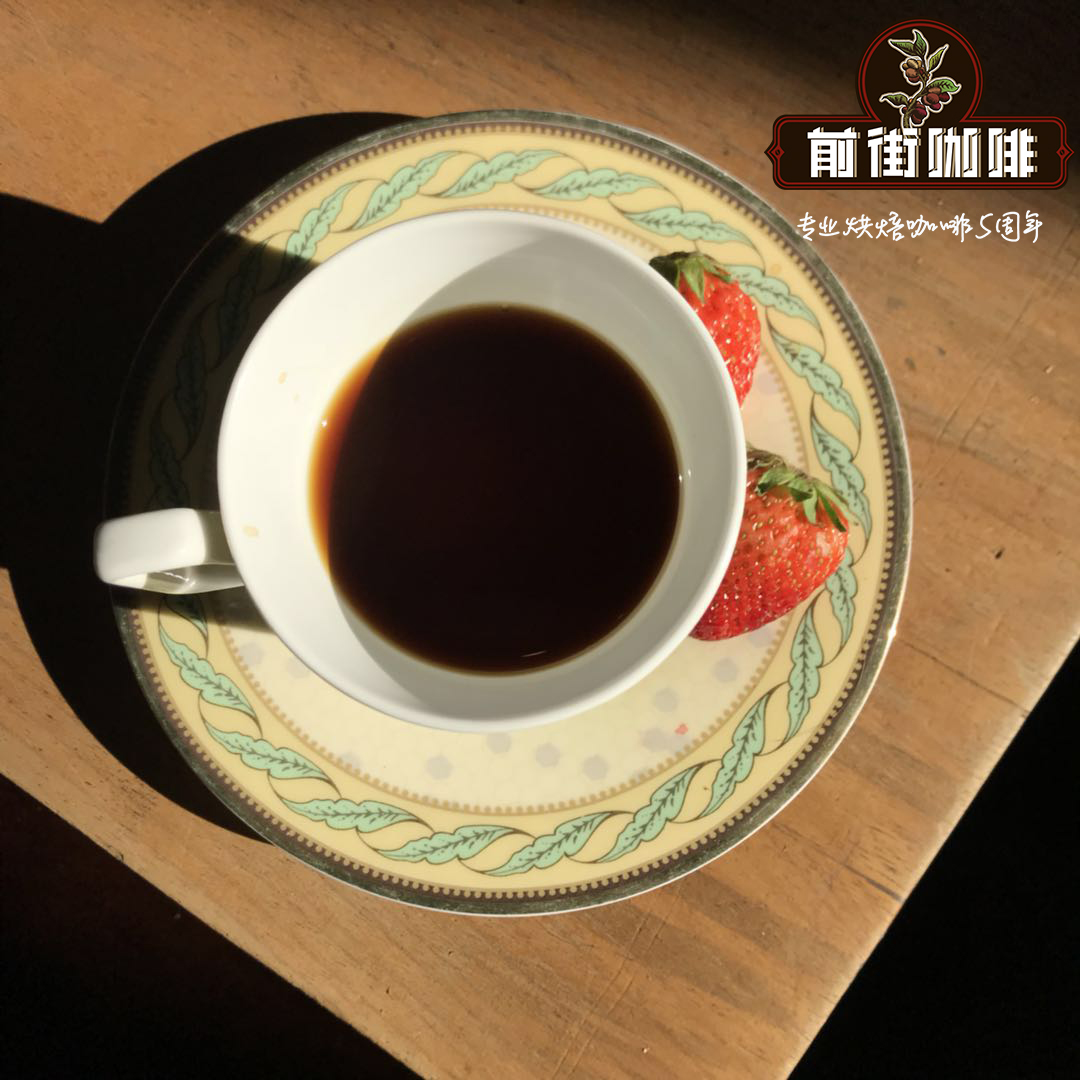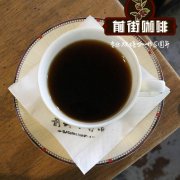Colombian coffee producing area introduces how to drink Colombian Cauca micro-batch coffee?

Professional coffee knowledge exchange more coffee bean information please follow the coffee workshop (Wechat official account cafe_style)
Colombian coffee producing area
Na Linglong
The Columbia area is located in the Andes at the junction of Colombia's southeast and Ecuador (the Andes, which begins in Chile and Argentina in the south, spans the north and south of Colombia and runs through the Nalinglong producing area). The natural geographical environment here: the tropical Pacific coast, the Amazon basin and the high Andes mountains divide the Nalinglong producing area into three major topography, the first is the plain along the Pacific coast, the second is the Amazon basin, and then the Andes mountains. Nalinglong coffee producing area is produced by 37 cities in Nalinglong province. The Nalinglong producing area is near the equator at latitude 0 ℃. It receives almost the same number of sunshine hours every day throughout the year, with an average sunshine time of 1666 hours per year. At the same time, the location and geographical environment of the producing area, the average annual temperature suitable for coffee growth, the stable temperature change in the morning and evening, the annual rainfall, and the soil rich in organic matter make the coffee trees in Nalinglong producing area thrive at very high altitude. it has a significant effect on the flavor and aroma of coffee.
Dorima
Located in the southwest of Colombia, Huila to the east and Valle del Cauca to the west, Tolima is the heart of Colombian boutique coffee, halfway between the eastern and central mountains of Cordilleras and run through the Magdalena River. Here there are great water quality, climate, altitude, as well as professional and advanced coffee planting and treatment technology.
Vera.
The Vera producing area, located in southwestern Colombia, is one of the well-known Colombian boutique coffee producing areas on the canyon slope formed by the western coastal mountains and the eastern mountains. it is also the southernmost area of the boutique coffee growing area with higher latitudes. Compared with other regions, Vera producing area has rain all the year round and the climate and temperature are suitable. Such planting conditions provide the region with high-quality coffee beans that can even be planted to an area of more than 2,000 meters. Vilado is mainly small farmers, and the coffee is washed.
Test card
Cauca province is one of the well-known boutique coffee producing areas in Colombia, bordering Nalinglong in the west and Vera province in the east. The 29 administrative regions where coffee is grown and distributed range from 1758 meters to 2100 meters at high elevations. Like the boutique coffee producing areas in southern Colombia, the climate, rainy season, volcanic soil and other factors have a high degree of homogeneity. A fixed rainfall cycle (the dry season from August to September is followed by a rich rainy season, Rain Water) provides favorable results for coffee trees. High-intensity sunshine and low rainfall coincide with the flowering season (July-August), when it also leaves the equatorial windless zone, providing favorable flowering conditions for coffee trees. These factors also contributed to the concentrated harvest in the first quarter of the next year. Compared with other coffee-growing areas in Colombia, the climate is more variable in the daytime temperature: the average daily temperature is as low as 11 degrees, and the average temperature during the day is 18 degrees (the average temperature at night is 4 degrees). This sharp temperature difference between day and night is a boost to the growth of Coca Coffee. The low night average temperature caused by high altitude slows down the ripening of coffee beans, improves the acidity and gives special sweetness.
Sotara is a small town in the middle of Cauca, while the Sotara volcano belongs to the Andes, providing nutritious soil for coffee beans to grow. Coffee cultivation in this area covers an area of about 911 hectares and consists of mountainous areas and three well-known rivers: Caueta, Cauca and Magdalena.
Columbia Cauca Micro-batch Barrilla Colombia Microlot Cauca Jose Cornelio Barrera
■ countries: Colombia
■ producing area: Uribe, Cauca
■ altitude: 1840 m
■ treatment: washing
■ level: Excelso
■ variety: Castillo
■ flavor description: grapefruit, white peach, fragrant leaf plants, herbal tea, pumpkin seeds, delicate aroma, Body smooth
From the village of Uribe in El Tambo Autonomous region of Cauca Province, small farmer producer Jose Cornelio Barreta Montenegro and his wife Gerardina Serna jointly manage 1 hectare of land. Benefiting from the volcanic environment of Cauca Province, this area has suitable external planting conditions such as volcanic soil, a high altitude of more than 1800 meters and rainfall of 2300-2600mm. Although the land is small, Barrera is always full of enthusiasm, focusing on growing coffee and constantly learning new technologies to improve quality. For example, work with other local producers to develop a set of standardized harvest procedures, after drying, the Barrera couple also hand-picked defective beans.
Qianjie Coffee is recommended to brew Colombian coffee in a V60 filter cup with a water temperature of 89-90 ℃, a grinding degree of 3.5 Fuji, a ratio of powder to water at 1:15 and an extraction time of two minutes.
Important Notice :
前街咖啡 FrontStreet Coffee has moved to new addredd:
FrontStreet Coffee Address: 315,Donghua East Road,GuangZhou
Tel:020 38364473
- Prev

How to drink Costa Rica Vera Sachi coffee? Shangri-La Manor, Costa Rica
Professional coffee knowledge exchange More coffee bean information Please pay attention to coffee workshop (Weixin Official Accounts cafe_style) Costa Rica has seven coffee producing areas, among which Tarazhu, Central Valley and Western Valley are the three most famous and best quality producing areas. West Valley is one of the seven producing areas of Costa Rica, and Valle Occidental is the western mountain.
- Next

Want to drink bulletproof coffee to lose weight? You must not know the bulletproof coffee weight loss principle and practice course
Professional coffee knowledge exchange more coffee bean information please follow the coffee workshop (Wechat official account cafe_style) have you heard of ketogenic diet? Do you know bulletproof coffee? The recent popular slimming diet is bulletproof coffee, which makes people feel easy to implement and easy to achieve! Bulletproof coffee, which is popular in Europe and the United States and flocked to Hollywood celebrities, has recently been constantly reprinted on social networks.
Related
- Detailed explanation of Jadeite planting Land in Panamanian Jadeite Manor introduction to the grading system of Jadeite competitive bidding, Red bid, Green bid and Rose Summer
- Story of Coffee planting in Brenka region of Costa Rica Stonehenge Manor anaerobic heavy honey treatment of flavor mouth
- What's on the barrel of Blue Mountain Coffee beans?
- Can American coffee also pull flowers? How to use hot American style to pull out a good-looking pattern?
- Can you make a cold extract with coffee beans? What is the right proportion for cold-extracted coffee formula?
- Indonesian PWN Gold Mandrine Coffee Origin Features Flavor How to Chong? Mandolin coffee is American.
- A brief introduction to the flavor characteristics of Brazilian yellow bourbon coffee beans
- What is the effect of different water quality on the flavor of cold-extracted coffee? What kind of water is best for brewing coffee?
- Why do you think of Rose Summer whenever you mention Panamanian coffee?
- Introduction to the characteristics of authentic blue mountain coffee bean producing areas? What is the CIB Coffee Authority in Jamaica?

